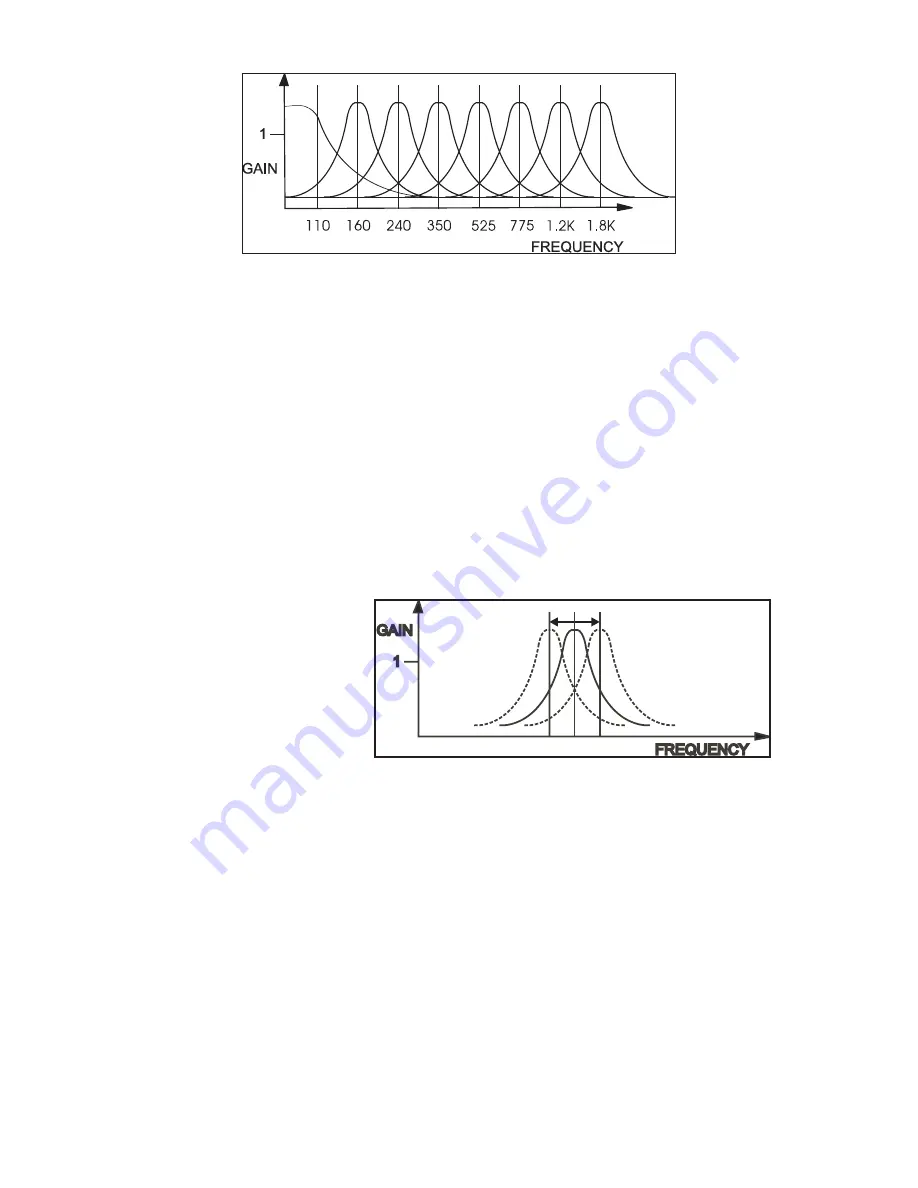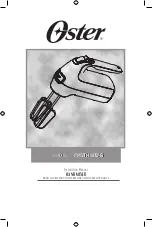
7) The Filters’ resonant frequencies can be shifted up and down by a
small amount to create an effect similar to phasing. Figure 8 shows
a graph that portrays the results of shifting a resonant filter’s center
frequency. In the MIDI MuRF this can be done two ways, depending on
the position of the LFO slider switch. When the slider is in the "OFF"
position, the filters’ center frequencies can be shifted by an expression
pedal (such as the Moog EP-2) or CV plugged into the LFO/SWEEP
Jack. To hear how this works, return to the basic setup described in
Figure 5. Plug a Moog EP-2 into the LFO/SWEEP control input. Then,
as you play into the MIDI MuRF, rock the EP-2 back and forth. You will
hear the filters’ frequencies shift with the motion of the pedal.
Figure 7 - BASS Frequency Response
Figure 8 - Filter Frequency Shift
When the LFO slide
switch is in the "ON"
position, a LFO (Low
Frequency Oscillator)
shifts the frequencies of
the filters as a group up
and down automatically.
The LFO is a sine wave. The LFO rate is initially determined by the
pattern. An expression pedal (EP-2 or equivalent) or CV connected to the
LFO/SWEEP jack can modify the LFO Rate from .08 Hz to 20 Hz.
To hear the effect of the LFO on the MIDI MuRF’s filters, return to
the basic setup outlined in figure 5, then move the LFO slider switch to
"ON". Now as you play through the MuRF, you’ll hear the filters swept
up and down automatically. To change the speed of the LFO, plug a
Moog EP-2 expression pedal into the LFO/SWEEP Control Input. The
EP-2 can now slow down or speed up the LFO.
page 9
Содержание MIDI MuRF MF-105M
Страница 36: ......









































